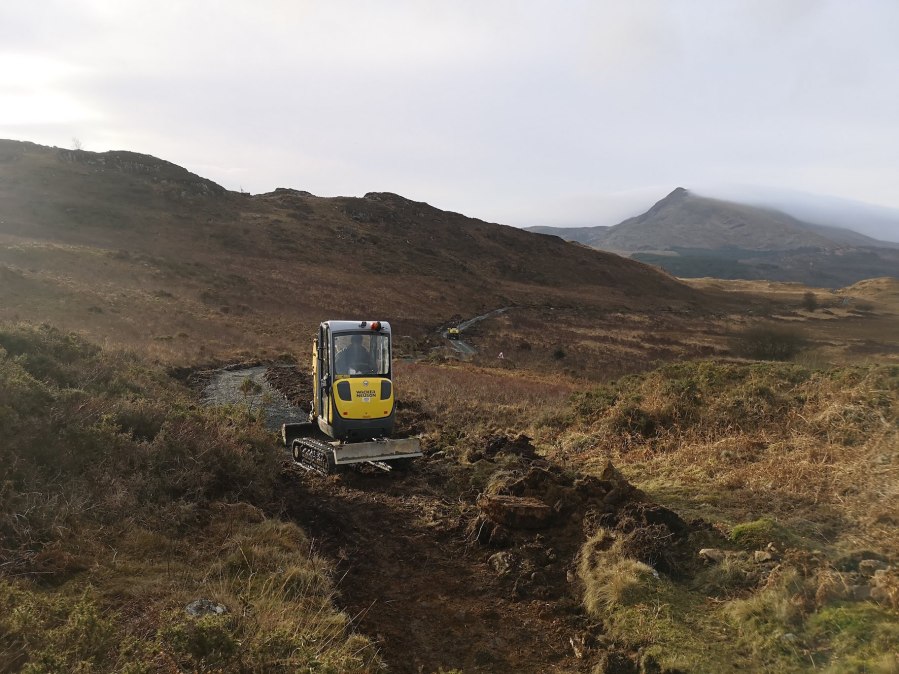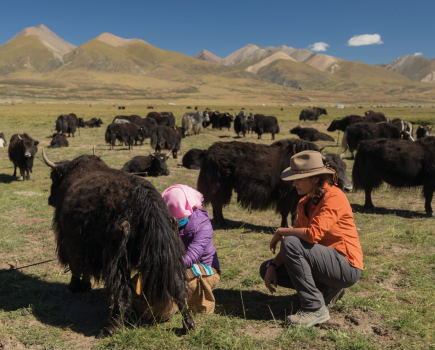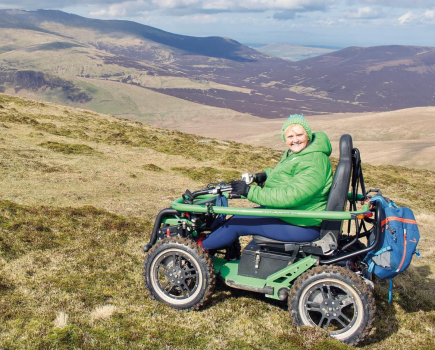Work being done on a Snowdonia bridleway has caused outrage among some hillgoers recently. Local mountaineering instructor Mike Raine gives his take on the issues.
Main image: work in progress on the path. Photo: Mike Raine
There has recently been some consternation amongst walkers and hillgoers in Snowdonia about the work being done on a bridleway above Capel Curig by the Snowdonia National Park Authority (SNPA).
The track through Nant y Geaullt from Capel Curig, north, towards Crafnant, is being worked on as far as the bwlch to the east of Crimpiau. There is an article on the British Mountaineering Council website and a site meeting has been had by BMC Cymru/Wales. Social media has been buzzing with outrage.
The work is quite dramatic and, even bearing in mind that things look a lot worse during the construction phase, the goings-on are quite unsettling. Excavators and dumper trucks are creating a uniform smooth trail up through Nant y Geuallt and hundreds of tons of aggregate are being transported up the valley.
It is easy to see why so many of us react with a degree of hostility, sometimes even apoplexy, to these ‘improvements’. Local resident, landscape photographer and The Great Outdoors contributor Nick Livesey described it as “A philistine solution to a problem that didn’t exist”. Another resident said: “We want upkeep on paths but not this sort of inappropriate development!”
Context
The angst amongst some mountain bikers and some hillwalkers is warranted and completely understandable. As ever, though, context is everything. Historically this track would have been the route to places of worship in the Conwy Valley for residents in the Capel Curig area, it would have served as a coffin road and would have been the main drover’s road between Capel Curig and the settlements of Llanrwst (to market) and Conwy (to port). In fact, I think we can be slightly relived that it has escaped tarmac. It would have been a busier route than the Hardknott Pass in the Lakes and, but for an accident of history, could have now been similar to the road to Llyn Cowlyd.
Even so, in times gone by this would have been a well-maintained trail. But this path has suffered greatly in recent years, partly due to use, but more due to storms. I walk this track regularly and the drainage systems have failed, leaving large puddles, standing water on the track and numerous boggy detours. There are several places where subsidiary tracks have formed, there are stepping stones that are not doing the job they are meant to, and there is gullying. That said, parts of the track are lovely walking, or cycling, in single file through regenerating trees.
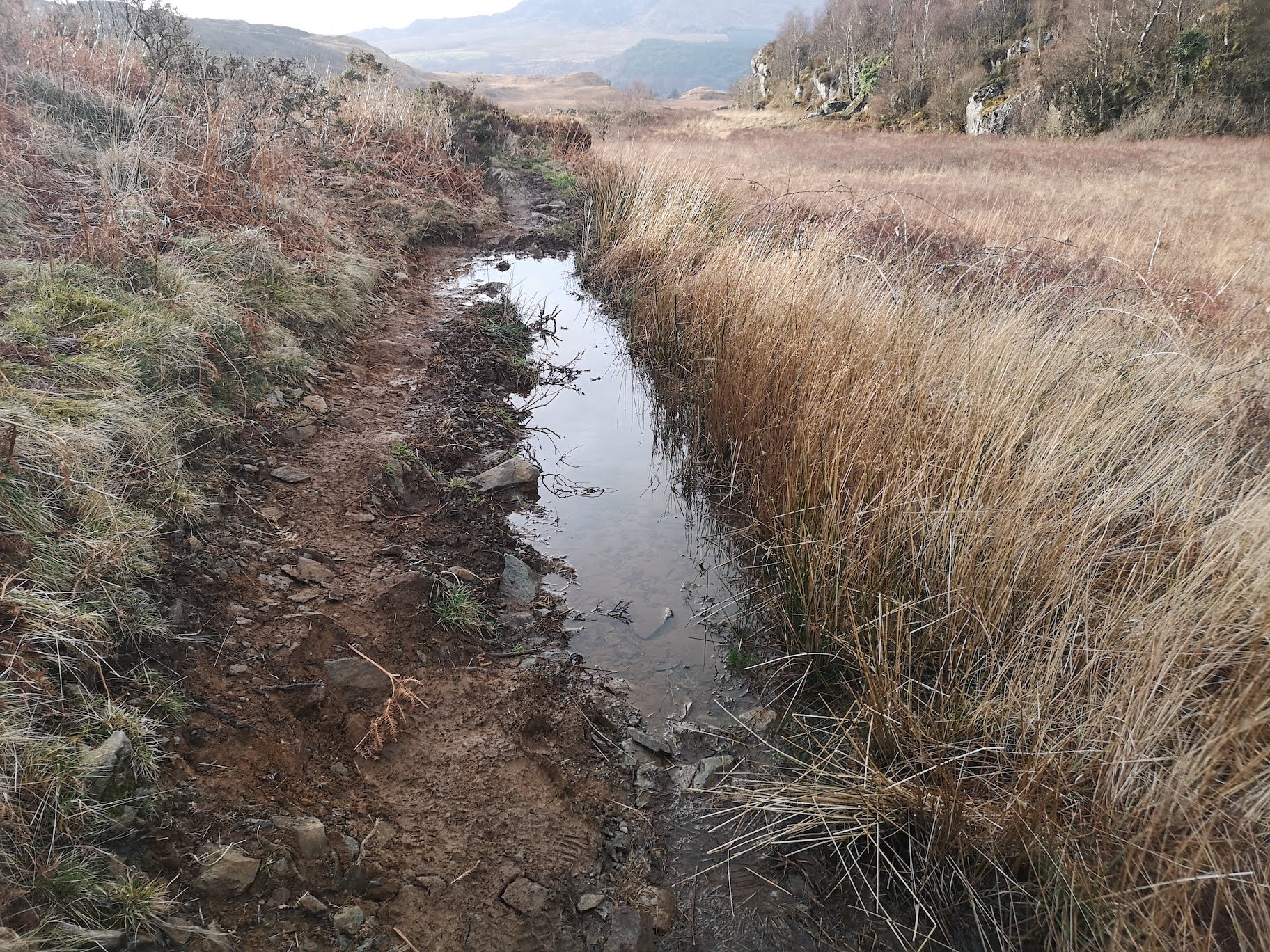
Current conditions on the path. Photo: Mike Raine
The path is classed, by the SNPA, as a “flat, multi-user path”. This means a stone-pitched path is inappropriate, besides being extremely expensive and slow to build. So, the track here will be the same as the one to the east of Pont Gwil Rhos (the nice bridge at the Capel Curig end of the track). It will be, and almost is, a gravel track which is suitable for a wide range of users. Even when completed, it will be far more discreet that those on Helvellyn and Yr Wyddfa, and will be more sensitive and in keeping than work recently done on the Pindale path near Castleton.
Underfunding
Personally, I’d love to see it repaired along the lines of an old packhorse route, like the one over Blackstone Edge, or maybe with paving slabs, like on Peak District sections of the Pennine Way, another piece of footpath work that caused major upset when first constructed but has blended in and become accepted. But both these options are expensive, and again, context is important.
The SNPA, as with all our national parks, has been forced to make choices with a budget which today is equivalent to that which they received in 2001. They’re under pressure to improve this track. That they have had to choose the cheapest option to do so is a failing of our political leaders and decision makers to see the importance of better funding for our national parks and proper investment in bridleways and footpaths. The SNPA has had to respond, sometimes quite quickly, to the availability of grant funding, rather than have a structured, costed and funded programme of works which could be consulted on. We don’t bat an eyelid at road resurfacing, we expect it, but the money is not coming through for quality work on our footpaths and bridle ways – at least, not enough.
In any case, there is still concern that the work on this track was not discussed by local councils or by the local access forum. If you want to make your point these are, usually, the channels to follow. Better communication is required on issues like this from SNPA, and other footpath-maintaining authorities, with user groups such as, in our case, the BMC and the Ramblers.
Proactive
I am, however, supportive of the national park. They are working within a budget and I have been assured that lessons surrounding communication have been learnt. Anyone who views the old path through rose-coloured spectacles needs to look again. It needs work. When completed this new track will blend in far better than some other examples I’ve mentioned above. Indeed, we have legacy of fine quarry tracks in Snowdonia and they are very similar to this one. It also important to remember that the SNPA is not rebuilding this track for hardened mountaineers and skilled mountain bikers; they are making it passable for ordinary walkers, cyclists and horse riders. We’d all agree that we need a population that is more active and paths like this might help that.
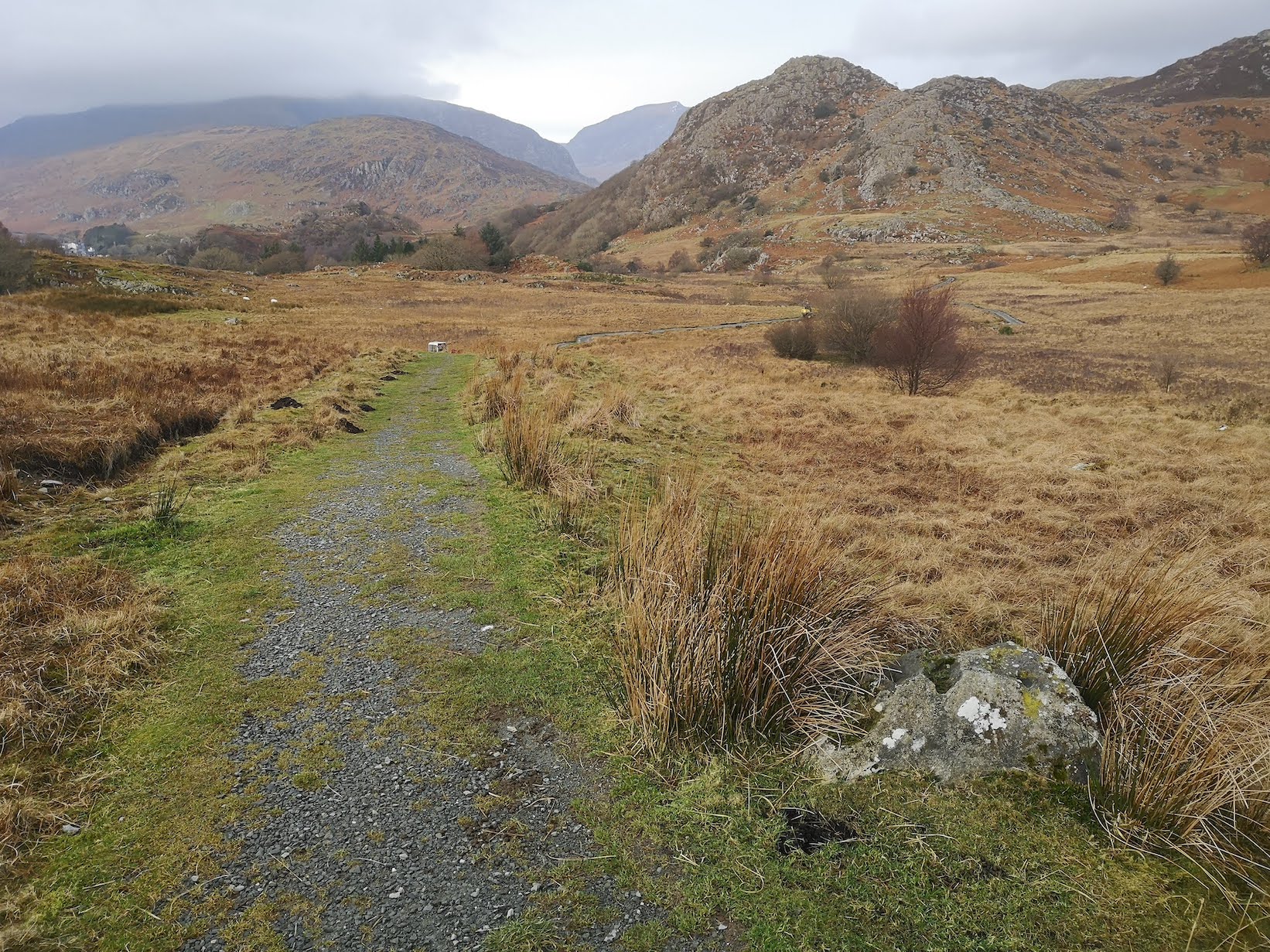
A path of a similar construction nearby, showing what the Crafnant path will look like when finished. Photo: Mike Raine
Angry reactions to path work are something that I’ve often observed over the years. I even remember one of my mentors in the 1980s taking direct action and deliberately damaging some footpath work. In later life he actually became a footpath maintenance volunteer. His journey of acceptance is not uncommon. The lesson to us, as always, is to be more proactive and less reactive. Seek out the channels of communication, volunteer, write to your political representatives.
For my part, when it comes to the Crafnant path, I have sought reassurances that the lovely little regenerating trees around a stretch of the path (a fine bit of accidental rewilding) and the old gnarly crab apple alongside them will not be harmed. I will be checking…
Mike Raine is a mountaineering instructor working in North Wales, and a former senior instructor at Plas y Brenin. He is the author of Nature of Snowdonia.

